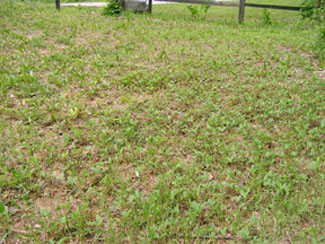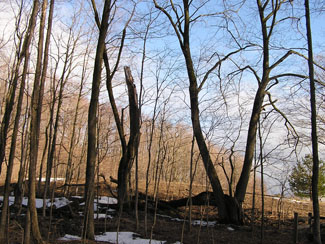Impacts of summer weather on landscape plants
The hot and dry summer weeks can severely stress our trees, shrubs and lawns, but homeowners can easily protect.
During the heat of the summer, our landscape plants are under severe stress. High temperatures, gusty winds, hail, rain and lightning can cause damage to our prized plants. Although we have little control over the weather, there are a number of things we can do to minimize the damage and maintain good vigor.
Drought stress in landscape trees
In our diagnostic labs, we are seeing a lot of stress on maples and other trees. Keep in mind that many of our maples are getting older and as they age, it is natural to see branches starting to die, especially in the upper canopy of the trees. During drought periods, it is imperative that landscape trees are watered on a regular basis if rainfall is not adequate. A good recommendation is to water three times per week during the summer months and twice a week during the spring and early fall if there is no rainfall. The typical lawn sprinklers are not adequate for our larger trees and shrubs. Adding a trickle system can be very effective to insure that each tree receives enough water. The simple and quick solution is to place a garden hose at several locations under the tree and run at 20 percent volume for 10 to 15 minutes on each spot. Applying nutrients and water to our trees will help insure health and vigor, even during dry months. Fertilizers should be applied according to soil testing recommendations and, in most cases, not after the heat of the summer.
Lack of green and vigor in lawns

A lawn that was not irrigated and, in the heat of the summer, has thinned out and gone mostly to weeds. Photo credit: Stephen Fouch, MSUE. |
Another area of concern is how we handle fertilizing and watering of our lawns. Most homeowners do have irrigation or sprinkler systems, but struggle with keeping their grass green and vigorous. Keep in mind that our lawns consist of cool season grasses, Kentucky bluegrass, fescues and perennial ryegrass. These grasses grow well in the cool months of spring and fall. But once the hot, dry summer weeks arrive, these grasses start to struggle and often go dormant. What was once a lush, dark green lawn has now turned brown or at least light green. Unless you have a golf course or high maintenance turf, recommendations are to allow the grass to go dormant and not fight against its natural tendency to slow down during the summer months. Apply nitrogen in the late spring and early summer months and also in the fall. Summer applications of nitrogen are not recommended.
When watering your lawn, it is best to irrigate during the morning hours to insure that the foliage dries off rapidly to minimize disease potential. Watering at night might increase disease potential. Water is critical to quality turf.
Storm damage to landscape plants
|
|
High winds and lighting can cause severe damage to landscape plants. This can range from minor limb breakage to major tree damage. Where limbs are broken, it is important to cut off as cleanly as possible to prevent further damage to the tree. In most cases, wound compounds are not needed. Where major tree splits or larger limbs are evident, the homeowner should contact a professional tree service to assess the damage. This is especially true where the trees are a potential hazard to a home, overhead wires, play areas and other impacts to safety. Homeowners should contact their insurance company to evaluate what might be covered. (For more on storm damage to landscape plants, read MSU Extensions’ Beth Clawson’s article on Repairing ornamental plants and trees from storm damage.)
A final area of concern has been the increasing number of complaints related to possible herbicide injury in our landscapes. Many formulations of weed killers are available to the untrained homeowners over the counter. Applied inappropriately, these herbicides can drift off target and severely injure non-target plants. Follow the label and do not spray if there is any chance of drift. Call your local MSU Extension office for recommendations and precautions while using herbicides and all other pesticides.
Related resources on water use or drought:
- Excess drying leads to poor mulch performance, Rebecca Finneran, MSU Extension.
- Gardening tips for wise use of your water resources, Mary Wilson, MSU Extension.
- Native plants for Michigan landscapes: Part 1 - Trees, Mary Wilson, MSU Extension.
- Native plants for Michigan landscapes: Part 2 - Shrubs, Mary Wilson, MSU Extension.
- Silence of the soaker hoses, Gretchen Voyle, MSU Extension.
- Tough plants for tough places: Grasses, Rebecca Finneran, MSU Extension
- Water saving perennials: Carefree and beautiful without the fuss, Rebecca Finneran, MSU Extension
- Gardening in Michigan



 Print
Print Email
Email
